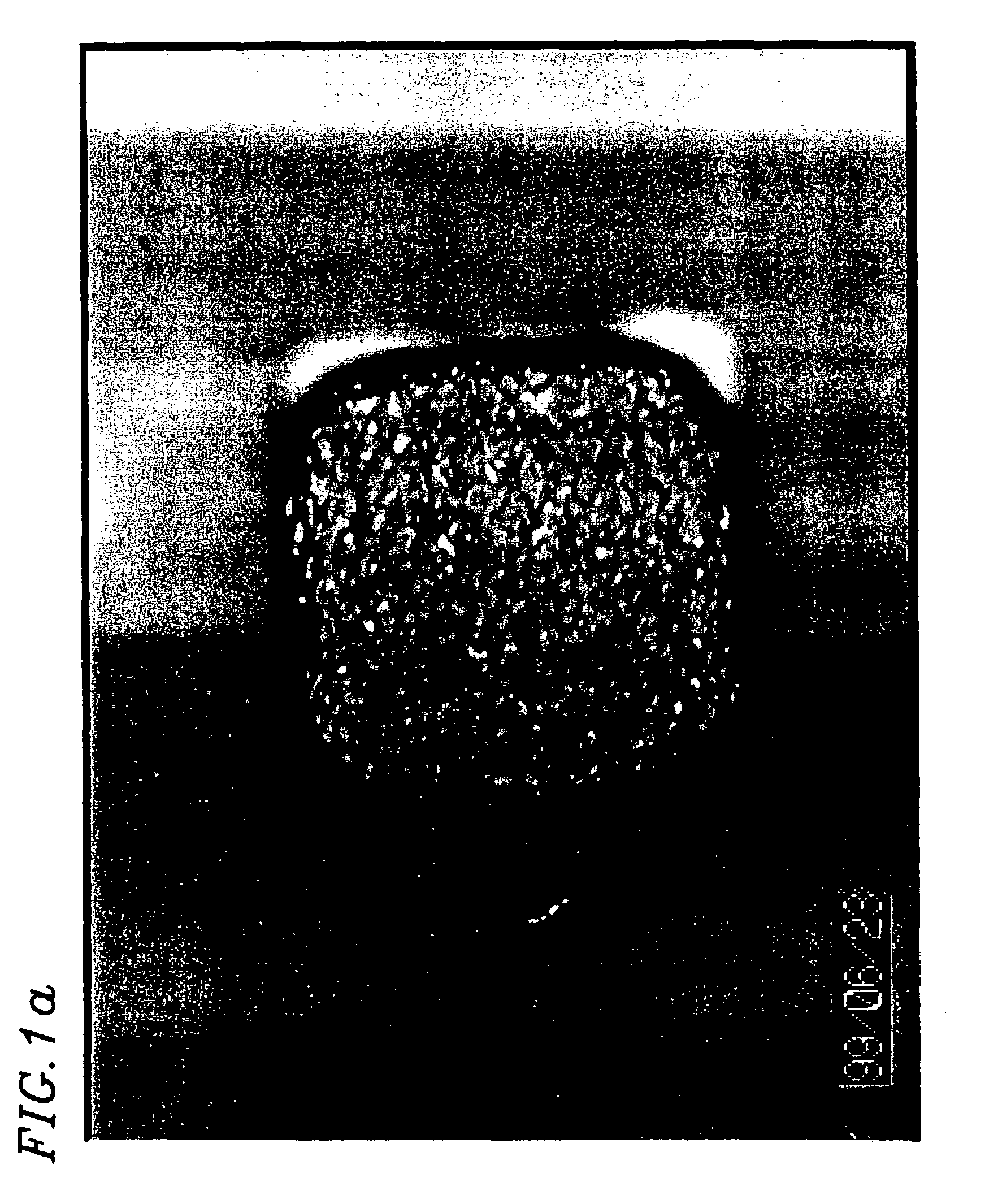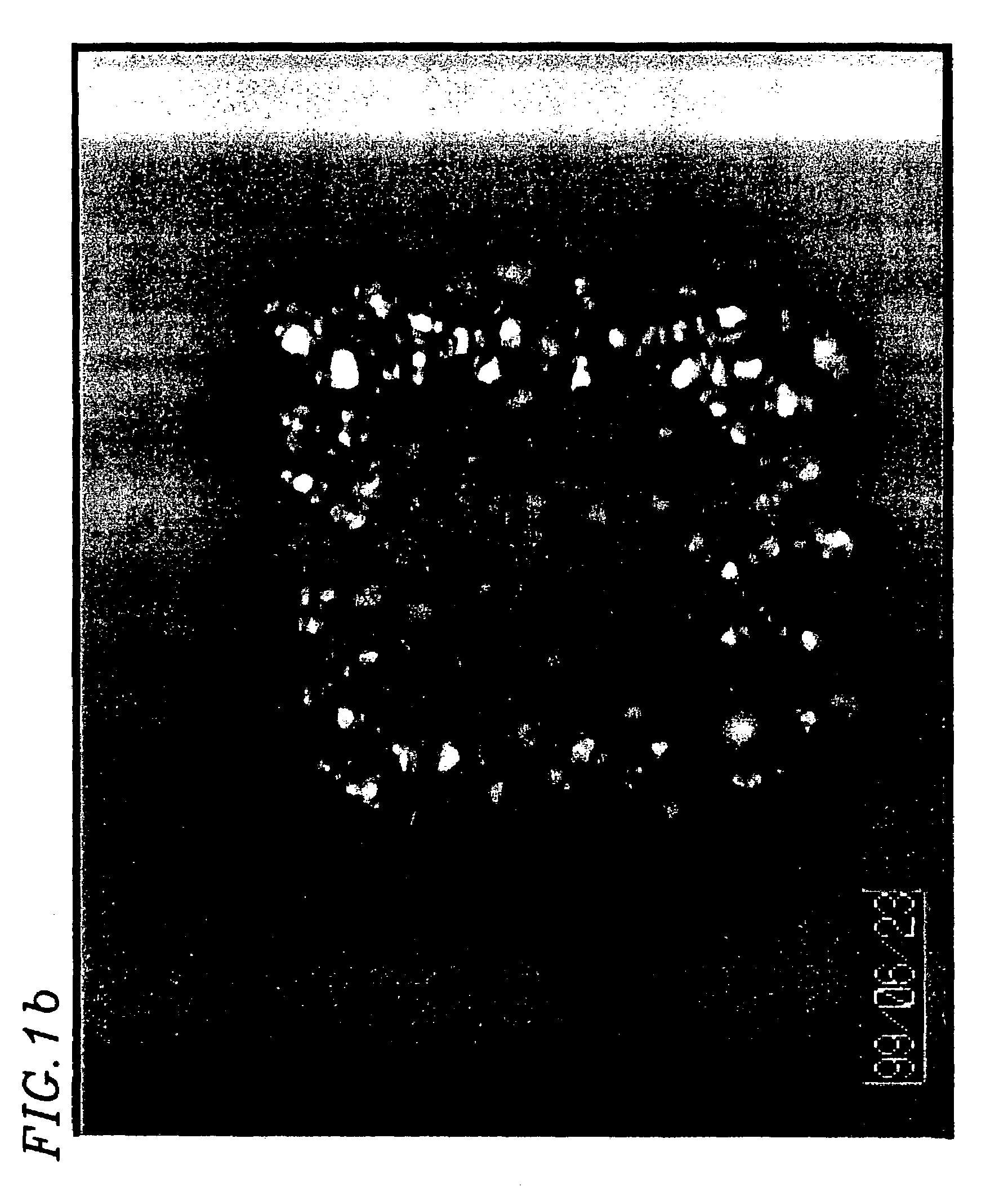Extracellular recording electrode
a recording electrode and extracellular technology, applied in the field of electroelectrophysiology, can solve the problems of high impedance of electrodes, signal is susceptible to external noise, and electrode preparation skills are required, and achieves low impedance, high strength, and easy recycling of electrodes.
- Summary
- Abstract
- Description
- Claims
- Application Information
AI Technical Summary
Benefits of technology
Problems solved by technology
Method used
Image
Examples
example 1
[0069]A surface of a planar multiple electrode was coated with electrolytic gold plating under various current densities (a central portion of each electrode having a size of 50×50 μm was positioned at one of intersections of an 8×8 grating. Therefore, the entire surface area of the micro-electrode (projection area) was 50×50×64=160000 μm2).
[0070]Specifically, electrolytic gold plating was formed at a current density of 1.0 A / dm2, 1.5 A / dm2, and 2.0 A / dm2. The impedance of the micro-electrode having the gold plating formed at the respective current densities was measured under conditions of a frequency of 1 kHz, an interterminal voltage of 50 mV, and the average of five measurements was calculated. The results are shown in Table 1. As the current density was increased, the average impedance of each of the micro-electrode could be lowered.
[0071]
TABLE 1Current Density and Average ImpedanceCurrent density (A / dm2)Average impedance (kΩ)1.0336.39 ± 78.591.5 22.07 ± 1.952.0 16.56 ± 2.34
[00...
example 2
[0073]The micro-electrode surfaces obtained in Example 1 and slices of the mouse hippocampus (brain) were actually used to measure evoked potentials and noise levels. Hippocampus slices were obtained from a mouse. A five-week-old male c57black6 mouse was anesthetized with Fluothane and decapitated to remove a whole brain. The removed brain was immediately cooled in Ringer's solution on ice. A brain block containing only the hippocampus was dissected. Thereafter, the obtained brain block was cut by a tissue slicer to give a slice having a thickness of 250 μm. The slice was placed and tested on the micro-electrodes.
[0074]Evoked potentials and noise levels were measured in the presence of an applied constant current of 10 μA having bipolar pulses (where the pulse width is 100 μsec). Responses of 64 electrodes were measured from 5 msec before stimulation to 45 msec after the stimulation, and were displayed on a computer screen having 64 channels. The results are shown in FIGS. 2a to 2f....
example 3
[0078]Frequency characteristics of planar micro-electrode surfaces coated with electrolytic gold plating obtained at various current densities were compared with those of a conventional product. Electrodes having porous gold-plated surfaces obtained at a current density of 2.0 A / dm2 and 1.5 A / dm2, respectively, had frequency characteristics similar to that of a conventional electrode having platinum black plating obtained by electrolysis. However, the gold plating obtained at a current density of 1.0 A / dm2 had frequency characteristics significantly inferior to those of the conventional product.
PUM
| Property | Measurement | Unit |
|---|---|---|
| impedance | aaaaa | aaaaa |
| current density | aaaaa | aaaaa |
| current density | aaaaa | aaaaa |
Abstract
Description
Claims
Application Information
 Login to View More
Login to View More - R&D
- Intellectual Property
- Life Sciences
- Materials
- Tech Scout
- Unparalleled Data Quality
- Higher Quality Content
- 60% Fewer Hallucinations
Browse by: Latest US Patents, China's latest patents, Technical Efficacy Thesaurus, Application Domain, Technology Topic, Popular Technical Reports.
© 2025 PatSnap. All rights reserved.Legal|Privacy policy|Modern Slavery Act Transparency Statement|Sitemap|About US| Contact US: help@patsnap.com



